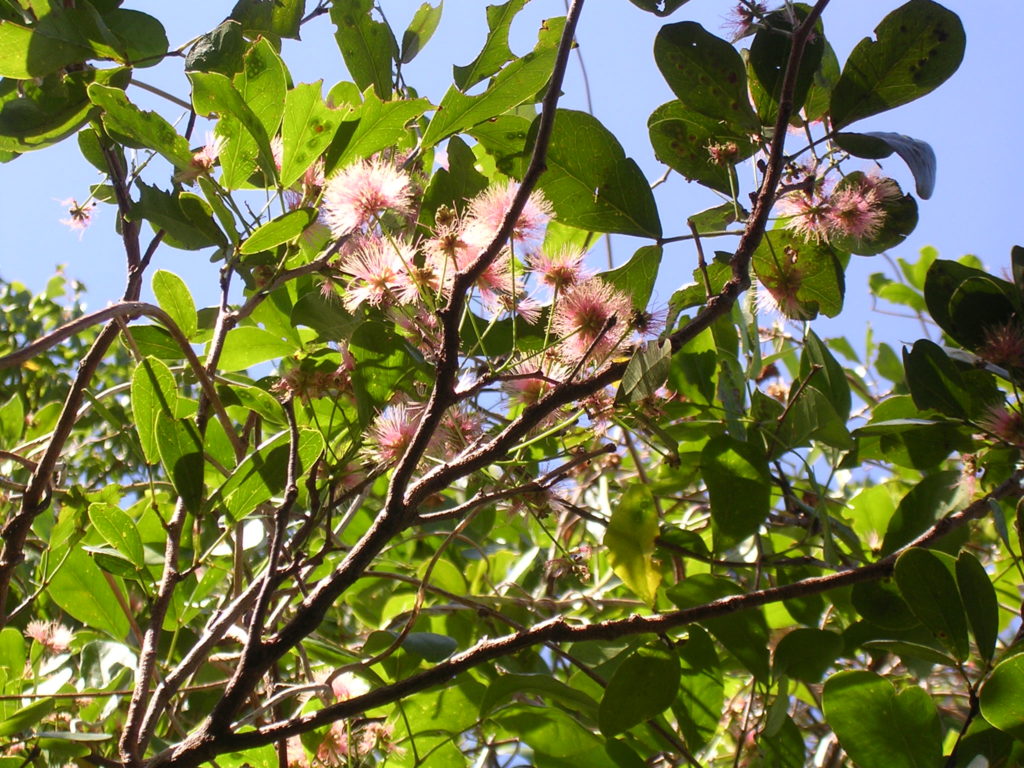
Blackbead
Pithecellobium keyense
Blackbead may grow to a 15 foot or more tree, but can be kept at six feet with occasional pruning. It is native along the coast from the Florida Keys to Brevard County.
The flowers are in dense pink clusters in the Keys or white clusters north of there. They attract a wide variety of nectaring butterflies. The young foliage of Blackbead is the larval food for the Large Orange Sulfur and Cassius Blue butterflies.
Blackbead can tolerate salt air and short periods of salt water flooding if planted behind Seagrapes or other front line vegetation. Plant in dry soil with some organic matter and full sun. It is very drought tolerant with hard wood that withstands storms.
This is one of the must haves for butterfly gardens. Both the Cats-Claw and the Wild Tamarind are also larval foods for the Large Orange Sulfur and Cassius Blue butterflies. Plant in a mass or as a small tree with an interesting twisted trunk.
The thorns are not very long but are a bit sharp, so plant Blackbead away from walkways and play areas. It mixes well with Saw Palmetto, Fiddlewood, Wild Coffee, Marlberry, Coralbean, Beach Cocoplum, Myrsine and other plants of the coastline and Keys.
The black seed, within a curled pod, has a red aril which attracts birds and is not poisonous to humans. The black seed is poisonous so don’t chew this.